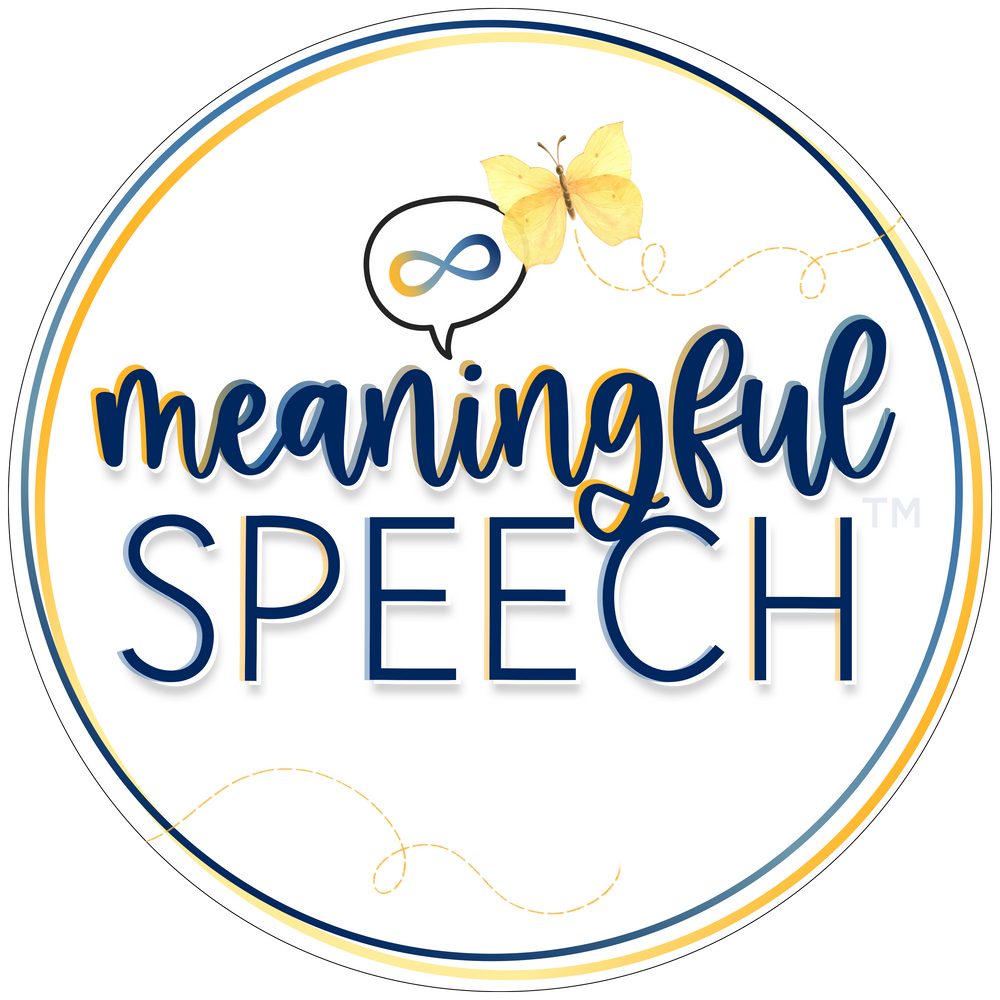Compliance-Based Therapy and Gestalt Language Development
Jul 26, 2023
We’re often asked about compliance-based therapy for gestalt language processors. Compliance-based methods go against how we best support gestalt language processors. We support gestalt language processors through child-led therapy and naturalistic language modeling using the Natural Language Acquisition (NLA) framework (Blanc, 2012).
Child-led Therapy vs. Compliance Based Therapy
Child-led therapy is all about following a child's interests and allowing them to lead in your sessions (with safety in mind, of course!) . Rather than going into sessions with an adult-directed agenda that the child must comply with (compliance-based therapy), we enter the child’s world of play. Children gravitate toward what they enjoy or what their body needs (jumping, crashing, etc). Sessions are intrinsically motivating and meaningful for the child. It creates a trusting and safe connection between child and clinician because it honors the child for their unique interests.
Compliance-based therapies often focus on compliance over connection. They use reward and punishment strategies and withhold desired items (for Autistic children, this is often their preferred/special interest(s) until the child complies, and reward the child when they comply. These strategies do not build a trusting relationship with the child. These strategies often take the joy out of the child enjoying their interest by turning it into something they have to work towards or something that they have to use in a way that isn’t enjoyable or intrinsically motivating to them.
Trust and safety are foundational to ALL language development. Without this connection, children will not accept our language models. Child-led therapy also ensures that language models are natural and meaningful to the child because we know the child is engaging in activities they truly enjoy.
Verbal Behavior & Gestalt Language Development
Compliance-based therapies often use what is called a “Verbal Behavior” approach. The purpose is to teach children language and it is based on principles from Applied Behavioral Analysis (ABA). It focuses on prompting language through teaching children to make requests (referred to as “mand”), label items in their environment (referred to as “tact”), answer questions (referred to as “intraverbals”) and imitate language (referred to as “echoic”). This programming goes directly against how we best support gestalt language processors through all of the stages of gestalt language development.
Prompting Language
First and foremost, we do not prompt or teach language to gestalt language processors. Gestalt language processors pick up language that is meaningful to them naturally by hearing it. Gestalt language processors in the early stages (Stage 1 & 2) need more gestalts in Stage 1 and more mitigated gestalts in Stage 2. These are modeled through naturalistic language modeling (narrating and commenting using declarative language). Gestalts are picked up because they resonate and are meaningful to the child. Language that is directly taught/prompted is not picked up naturally and therefore is not not scored when analyzing language samples using the Natural Language Acquisition framework.
Labeling
Gestalt language processors do not need to focus on labeling. A focus on labeling often results in the child having a large repertoire of “stuck” single word gestalts. A gestalt language processor in Stage 1 of their language development processes all units of language (whether many words or one word) as one unit that cannot be moved/combined/changed. Just like a multi-word gestalt, a single-word gestalt is learned as a unit and holds a much larger meaning to the child. They do not recognize them as single units of meaning that can be combined/expanded on when they are in the early stages of gestalt language development.
Questions
Gestalt language processors are not ready for a focus on questions until they are self-generating phrases and sentences (stages 4+). This is because a gestalt language processor in the earlier stages does not have the flexibility in their expressive language to respond in a manner that would represent their understanding of language. Focusing on questions before a gestalt language processor is ready may result in increased immediate echolalia, frustration from the child, and/or them memorizing the answer as an expected response.
Imitation
Many therapists use the term “pre-linguistic” to mean the stage before a child learns to speak. Imitation, joint attention, gestures and general vocalizations are considered pre-linguistic prerequisites to speech by many therapists. However, we know now that joint attention, imitation, gestures and vocalizations often look different (not less) for neurodivergent children. Therefore, these should not be targeted to match or judged against neurotypical norms/standards. None of these are prerequisites to speech. We do not need to "build" these. If a child is very young (early intervention age), non-speaking or minimally speaking and they are a gestalt language processor they are not in any "pre" stage. They are in Stage 1 of their language development. They do not need us to focus on imitation (or any of the other aforementioned skills).It all starts in stage 1 for gestalt language processors. Stage 1 is delayed echolalia. In stage one our focus is on modeling mitigable (easy to mix-and-match or trim down) gestalts.
Want to learn more in-depth information about how to support gestalt language processors?
- There are many free podcasts, webinars and articles to get you started. A comprehensive list of resources can also be found on our website and Communication Development Center's website.
- Consider taking the Meaningful Speech course to learn more about how your child or client processes language, how you can help support them from echolalia to self-generated (original flexible) language, child-led therapy, and neurodiversity-affirming practices.
- Consider taking our AAC + Gestalt Language Processing course . It will teach you how to identify, evaluate and support gestalt language processors who use AAC or who you think might benefit from AAC.
- Look for a speech-language pathologist (SLP) who "gets it" and can help you in supporting your child's language development. Check out our registry. for SLPs who understand gestalt language processing and child-led therapy.
- Are you a school-based or private practice clinician looking for intake forms for new clients/students or creative visual reminder posters for your space? Check out the Meaningful Speech Marketplace.
